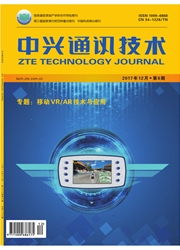

 中文摘要:
中文摘要:
为了更好地适应如空时码、联合发送、多入多出等未来移动通信系统核心技术的应用,满足第三代移动通信系统(3G)的多媒体业务对通信链路质量越来越高的要求。需要探讨全新的移动通信小区与网络拓扑结构。广义分布式多小区架构可以适应先进的多天线技术,并有效地解决由于载频提高导致的频繁切换问题。基于该架构的新型切换策略——群切换可以消除小区边缘效应,而进一步将群切换思想应用于3G系统的快速小区组选择方案可以大幅度地提高小区边缘用户的数据速率。
 英文摘要:
英文摘要:
In order to make full use of the advanced technologies for future mobile communications systems such as Space Time Code (STC), Joint Transmission (JT), Multiple Input Multiple Output (MIMO) etc, to meet the requirements of high bit rate multimedia services, new network topologies should be studied. The generalized distributed multi-cell architecture can take full advantage of multi-antenna technologies and solve the problem of frequent handover caused by higher carrier frequency. And the handover policy base on this architecture group handover, can eliminate cell edge effect. Furthermore, by applying the concept of group handover to 3G mobile communication systems, the Fast Cell Group Selection (FCGS) scheme can effectively improves the data rate for cell edge users.
 同期刊论文项目
同期刊论文项目
 同项目期刊论文
同项目期刊论文
 期刊信息
期刊信息
